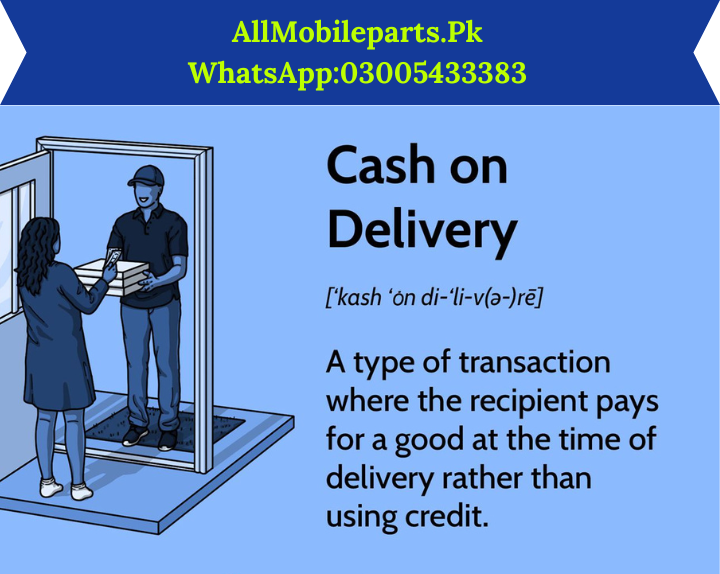Advantages and Disadvantages of Cash on Delivery
Advantages
For many businesses, in-person COD facilitates the immediate payment of goods and services. This is a significant accounting advantage because it can greatly shorten the days receivable for a business.
COD typically has shorter timeframes to delivery than standard invoicing. This is beneficial since the customer is required by an intermediary to pay at delivery. With COD shipping, customers have time to collect the money to make a full payment.
However, COD shipping increases the risk that a customer will not plan appropriately for payment, and the purchase will have to be returned. Returned purchases do not contribute to profits and may entail shipping return fees, both of which are disadvantageous to the merchant.
For merchants, offering a COD payment option may enhance consumer confidence in a new company that has not yet earned strong brand recognition. Generally, established companies are unwilling to assume the risks of COD shipping, opting for credit payment plans that charge interest and late payment fees.
However, in some cases, COD has an advantage over credit since the seller receives the full payment at delivery. COD can also help merchants avoid some risks of buyer identity fraud, stopped payments, or electronic card disputes. In some countries, such as India, cash-on-delivery transactions are boosting Internet commerce. COD transactions appeal to consumers who do not have established credit or alternative means for paying for goods.
Disadvantages
The cons of COD for businesses are that there is a greater risk that goods will be refused on delivery, and there are costs involved in returning items. For buyers, it may be more difficult to return items if they have already paid for them at delivery. A seller may be reluctant or under no obligation to accept returns, even if the consumer is unhappy with the goods.
The payment period is shorter than with other payment methods.
The method provides some protection from customers who might fail to pay or pay late.
Cash on delivery improves cash flow and budgeting.
Consumers who do not have credit can buy products.
Greater risk of delivery refusal.
Returning items can be costly for sellers who lack return infrastructure and support.
Buyers may find it difficult to return items that do not meet expectations.
Cash on Delivery vs. Cash in Advance
Cash in advance differs from cash on delivery as the buyer pays for the good or service before the product or service is delivered or shipped. Cash-in-advance payment methods, such as credit, are used to eliminate credit risk, or the risk of non-payment, for the seller. The seller benefits from cash in advance, and the buyer risks receiving delayed or damaged goods or goods that are not as expected. Cash on delivery, on the other hand, has benefits for both the buyer and the seller.
For cash-on-delivery terms, goods are shipped before payment is made. For cash-in-advance terms, the seller requires the buyer to make the entire payment upfront in order to initiate the shipping process. This protects the seller from lost money for goods shipped without payment.
Cash in advance is the most common form of payment for online marketplaces, e-commerce, and international business trade. Whether a business chooses to use cash on delivery or cash in advance depends on its ability to assume risk. Larger businesses may offer cash in advance for buyers because their accounts receivable and collections processes are more advanced.
What Is the Meaning of Cash on Delivery?
Cash on delivery is when a buyer pays for goods or services once they are received. Cash in advance, on the other hand, is when payment is made before the goods or services are shipped—for example, an e-commerce credit transaction.
How Does Cash on Delivery Work?
Buyers place an order, for example, on a website, and request delivery. The customer does not make a payment while ordering the item and chooses cash on delivery as a payment method. Once the order is placed, an invoice is prepared by the seller, which is attached to the parcel.
The parcel is shipped from the seller to the address provided by the customer. The customer pays the deliverer or shipper using cash or card. The COD amount is then deposited into the account of the logistics partner or shipper. The logistics company remits the amount to the seller’s account after deducting the handling charges.
What Are Examples of Cash on Delivery?
Examples of cash on delivery are when customers pay for a pizza that is delivered to their home, when a courier delivers something that a customer has agreed to pay for when it is delivered, or when a customer picks up clothing from the dry-cleaning store. Some online stores will allow cash on delivery.
The Bottom Line
COD is a payment option that has benefits for both buyers and sellers. For buyers without credit, COD is a convenient way to buy the things that they need. For sellers, as long as the goods are accepted on delivery, payment is quicker. Ultimately, the payment options that a seller provides depend on how much risk the seller is willing to assume and their capacity to handle complications such as returns and late payments.
Regard: Mr. Fazal Ahd
CEO of AllMobileparts.Pk
visit Now: https://allmobileparts.pk/






















/infinix%20smart%205%20(x657)%20dad%20board-215x215.jpg)


Leave your comment